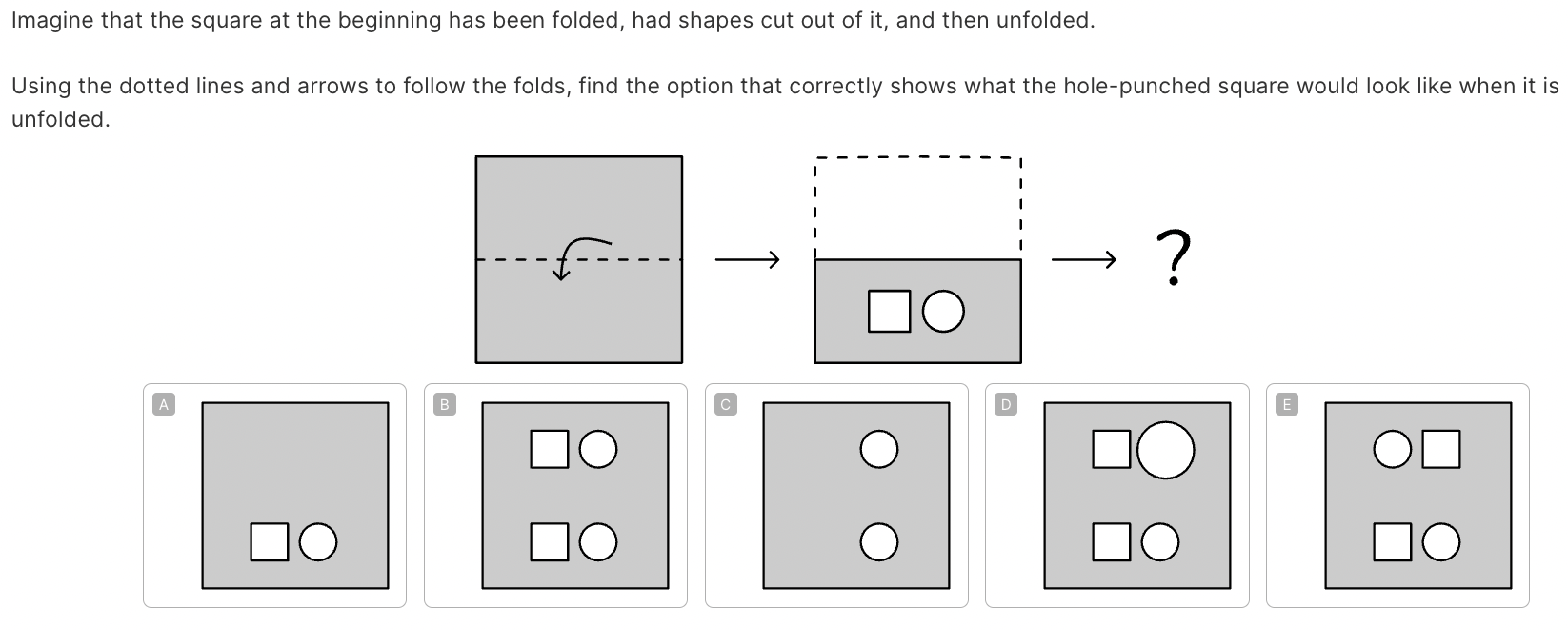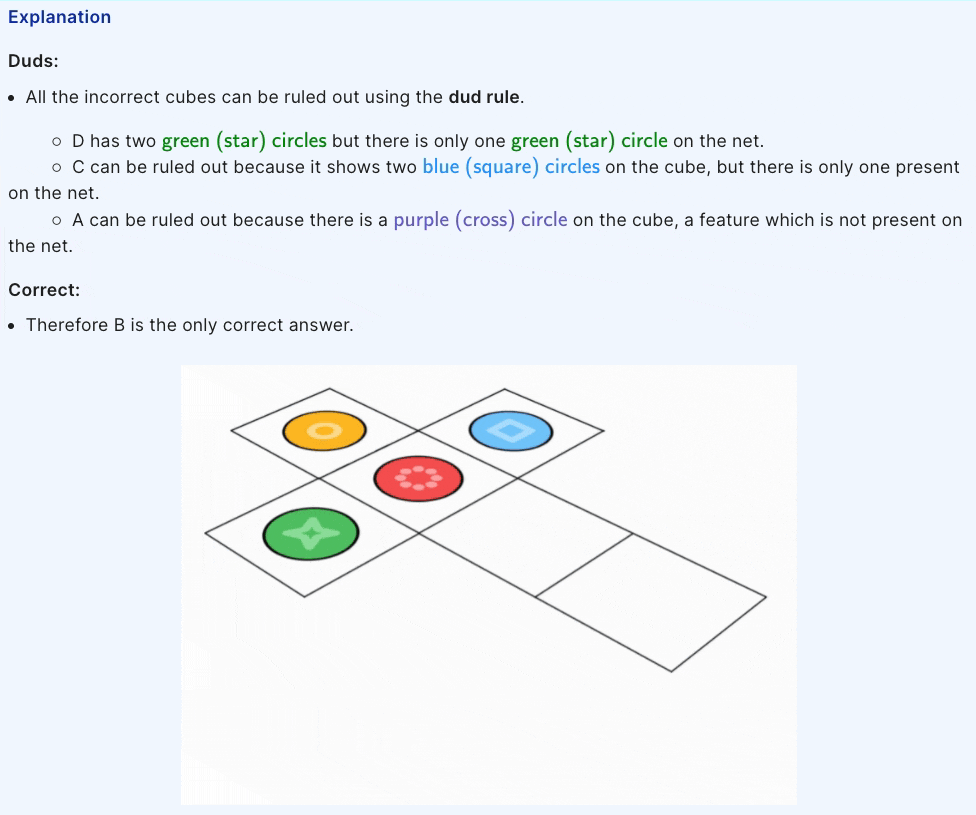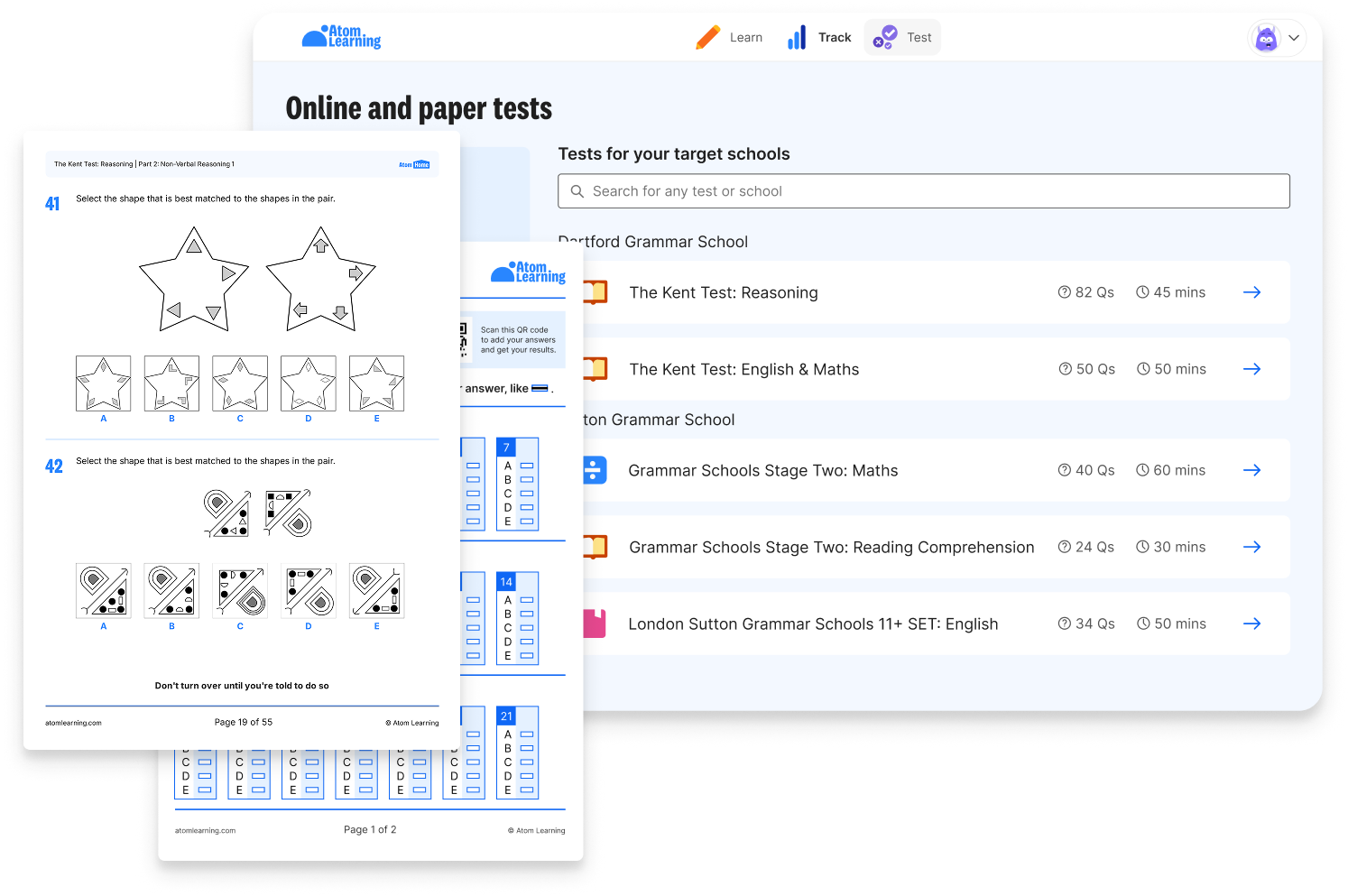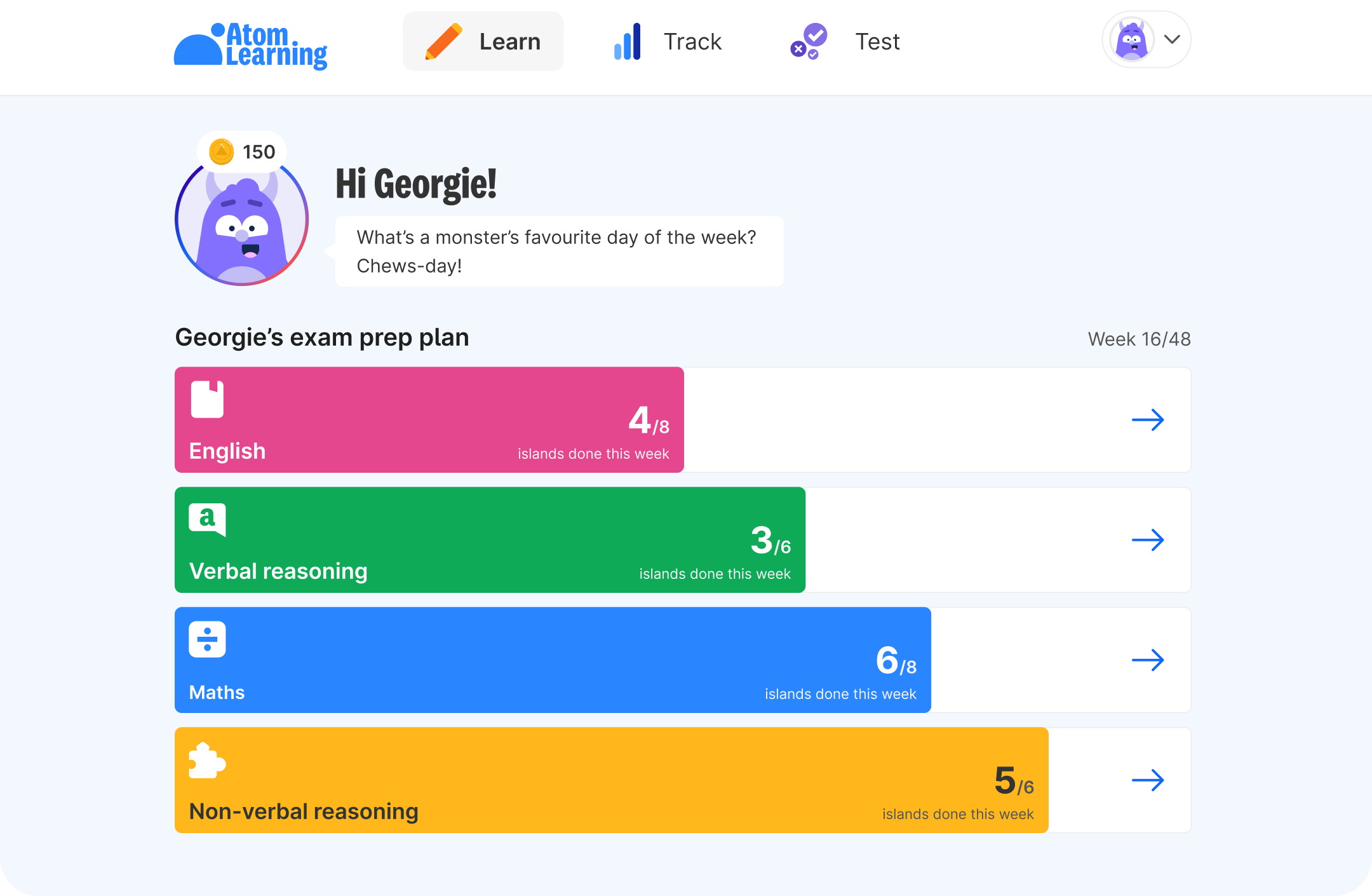Non-verbal reasoning has a reputation as a misunderstood part of secondary school entrance exams, including GL Asssessment 11 plus exams and the ISEB Common Pre-Test. But it doesn't have to be that way. In this article, Atom's Education Experts share tips on how to introduce your child to this style of problem-solving and lay the foundations to set them up for success.
Keep reading to learn:
- What non-verbal reasoning is, and when to introduce it to your child
- Best principles for introducing non-verbal reasoning
- Plus, download a free 11 plus non-verbal reasoning paper to test their skills!
What is non-verbal reasoning?
First, let's break down exactly what non-verbal reasoning is. Non-verbal reasoning is a form of visual problem-solving using shapes, diagrams and pictures. It tests skills such as:
- Logic and problem-solving
- Spatial awareness
- Ability to identify patterns and rules
Watch this video for an introduction to non-verbal reasoning:
When to introduce non-verbal reasoning to your child
Lots of children won't have seen verbal or non-verbal reasoning exercises at school. Reasoning is not part of the national curriculum for state primary schools. Even at prep schools, there is a large variation on when these topics are taught.
If your child is taking 11+ exams in Year 6, we recommend introducing them to non-verbal reasoning at the end of Year 4. This will give them enough time to develop skills, practise frequently, and get familiar with the different types of questions.
Atom can help your child build their non-verbal reasoning skills in bitesize steps. Atom's algorithm matches your child's level of performance to ensure they stay motivated. As they consistently answer questions correctly, they'll start to see more challenging questions.
How to introduce non-verbal reasoning
Some children find non-verbal reasoning easier than others – but all children can learn the right skills! Here are some fun ways to introduce your child to non-verbal reasoning and a different style of critical thinking.
Start with the basics
When introducing your child to any new topic, it's best to start with the easiest level of difficulty, and scaffold their knowledge and skills from there. This allows you to gauge which types of questions your child has a natural fluency in and identify areas of potential challenge.
Remember, exam preparation is a marathon, not a sprint! Starting with activities that are too difficult can demotivate and overwhelm early on. When practicing easier questions, your child will be building fundamental skills and confidence that they can then apply on advanced content in the exam.
If you're using Atom Home, the non-verbal reasoning questions will be easy to start with, to introduce key concepts. The algorithm will very quickly adapt to your child's ability, keeping them challenged at their optimal level as they progress.
For example, both of these questions test the ability to interpret, recognise and associate shapes. The first question lays the foundations, allowing your child to practice and build the fundamental skills that they will employ later on.

As they demonstrate sufficient mastery, the questions will increase in difficulty until they are being tested on the same concepts in a more challenging way in the type of format they would see in an exam.

Use visual aids
Visual aids can be particularly helpful for non-verbal reasoning question types. When we try to picture several shapes in our heads it’s easy to get confused. Encourage your child to draw the shapes out with a pencil and paper, as this can help them visualise the answer more clearly.
Introducing 3D objects is a great way to bring non-verbal reasoning to life and is particularly helpful if your child is a kinaesthetic learner. When introducing 'following folds' concepts such as in the example question below, you can use a piece of paper and hole punch to help your child to visualise how the shapes will look when they are reflected.

Likewise, when introducing 'nets and cubes', giving your child a real-life object like a dice or Rubik's Cube will support their visualisation.


Games and puzzles are another fun way for your child to develop their non-verbal reasoning skills through visualisation and hands-on interaction. Minecraft and Lego are particularly useful!
Encourage a growth mindset
When developing reasoning skills and preparing for exams, a growth mindset is key to unlocking progress. Ensure your child knows that it's OK to make mistakes, as long as we learn from them!
If you're working through non-verbal reasoning questions together with your child and you notice they're about to get something wrong, we would always recommend that you let them make the mistake. Ask them to submit the answer, and then discuss the explanation together, whether they were right or wrong. Making the mistake will give them the opportunity to reflect and evaluate, and is a far more effective learning experience than being corrected early in the process.
When working through practice questions, ask your child to explain the steps they are taking and why. By encouraging your child to articulate their thought process out loud from start to finish, you'll help them to consolidate their learning.
Remember to praise the process, not the results! Try to avoid only praising your child's score in practice papers or mock tests, as this can discourage them from valuing the learning and reasoning process. Instead, celebrate their resilience in making mistakes and learning from them, their attention to detail, improvements they've made from the last revision session – and encourage them to reflect on what they're proud of too.
The growth mindset is particularly valuable when introducing verbal and non-verbal reasoning. Encouraging to reflect on different ways to solve the problem will support them with their reasoning skills and build lateral thinking. Try asking these questions:
- Is there a different way you could solve this problem?
- Was this the quickest way to solve the problem?
- How would you explain this to someone else?
Learn about the different non-verbal reasoning question types and how to approach non-verbal reasoning preparation for the 11 plus here.


